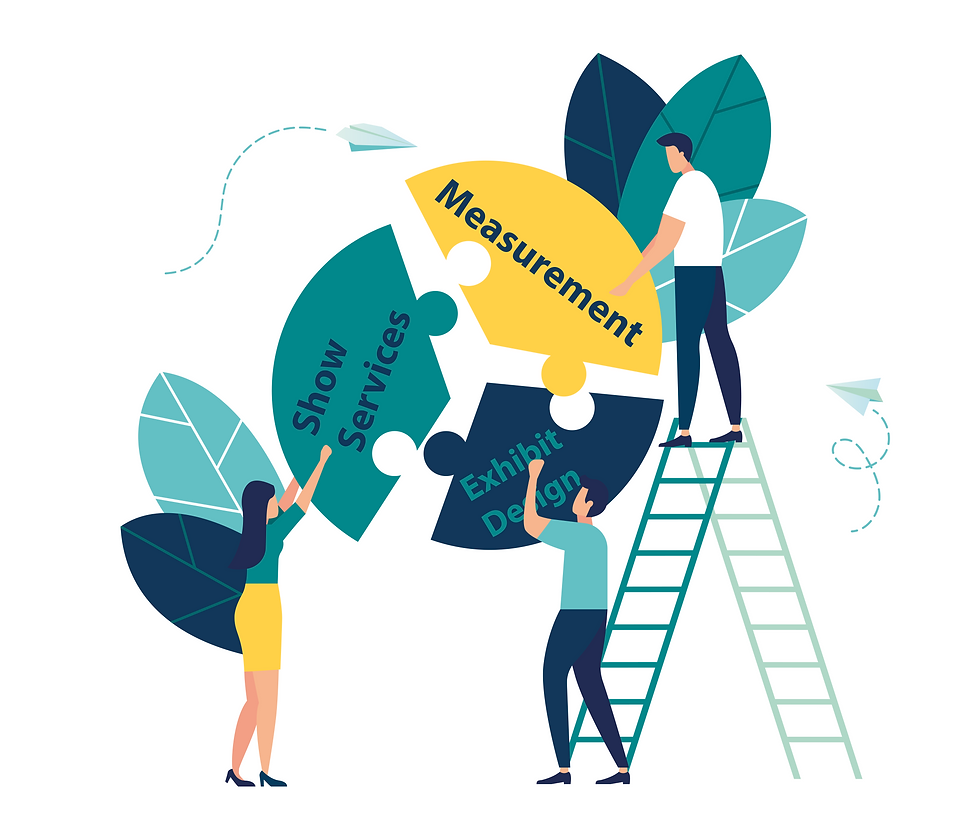Using Experiential Marketing at Trade Show Booths to Increase ROI
- fs-partners
- Nov 13, 2019
- 3 min read

Personalized experiences that create engagement are huge in marketing right now. Otherwise known as experiential marketing, this way of adapting the customer experience to engage them on a personal level encourages brand awareness, authority and loyalty. Consumers have adapted to this enhanced experience and now expect it from all of their interactions, including events like trade shows. The days of merely setting up a table with a stack of business cards and a sign-up sheet are fading.
In addition, rising exhibiting fees and other related costs are making a return on investment a must. So, what’s the answer? How can brands that market at in-person events produce engaging experiences and how can they track what’s working and what’s failing? We’ll explore those questions in this article.
Experiential Marketing Tips for Trade Show Exhibitors
Incorporating experiential marketing principles at your trade show booth can seem like a daunting task, but with careful planning and some strategy, it can work wonders for your ROI. Essentially, your objective is to create an interactive and immersive display that provides an authentic experience that will drive networking and ultimately help you gain qualified leads.
While this practice looks different for everyone depending on your brand and the type of customer you’re looking to engage, we’re going to provide you with some best practices to keep in mind when planning your next exhibit.
DO: Reverse engineer your exhibit to foster interaction.
DON’T: Create a made-for-all, one dimensional presentation.
It’s no big secret that it’s tough to stand out at trade shows. What isn’t so obvious to many exhibitors yet is that attendees don’t want a boring lecture. It’s not personal and it does nothing to foster a connection between your brand and target consumers.
Instead, you should aim for an experience that draws them in and engages them with your brand/product. The key to creating this type of experience is to consider what specific action you want your visitors to take and, as stated before, reverse engineering your exhibit to make it as easy as possible for them to take that action.
DO: Design your booth with your brand personality in mind.
DON’T: Use the same old signage and freebies that everyone uses.
As we stated earlier, it can be difficult to stand out among all the other booths that, quite frankly, look exactly the same. Instead, design your booth around your brand personality. Ask yourself questions like:
What’s your company’s back story?
What’s your brand mission?
What emotions do you want to evoke from consumers who interact with your brand?
What tangible products, informative media, or other features can you include to enhance, personalize, and create unique experiences?
DO: Incorporate interactive displays that increase engagement.
DON’T: Just aim for a “bigger is better” display that may just turn people off.
Experiential marketing doesn’t just encourage interaction with your customers, it enables you to show how your product or service works. One of the most beneficial ways to do this is by providing a live demo. This gives you an opportunity to educate consumers about your product but it also gives them an opportunity to see how your product works for themselves. As a result, live product demos tend to increase visitation rates and more importantly, dwell time and engagement.
Again, it’s not about a one-way, unending lecture. It’s more about providing an experience with your product and engaging with the audience. After all, 92% of trade show attendees say their reason for attending trade shows is to learn about new products, according to Trade Show News Network.
Obtain Metrics That Can Help You Increase ROI
The most critical component to using experiential marketing at trade shows to increase ROI is, of course, a method for tracking performance metrics so you can determine what worked, what didn’t, and what can be improved upon for your next event.
This is called real time customer experience tracking and it is our specialty at FastSensor. We track customer engagement for ROI in real-world settings such as retail stores and trade shows.
Our technology can track foot traffic, dwell time, visitor profiles, and even conversion from displays so you can gain insight into your visitor experience and position your displays and your staff accordingly.
Our AI-powered analytics provide actionable data that can help you achieve optimal ROI by creating the ideal experience for visitors and generating more leads. Our passive tracking software goes beyond other forms of technology like Bluetooth and WiFi tacking by helping you to:
Track and engage with visitors.
Collect behavioral data on visit frequency and dwell time.
Explore how visitors navigate so you can optimize their journey.
Measure passerbys, conversion rates, and attractiveness.
Don’t leave your customer experience to chance. Contact us today to learn more or schedule a demo so we can show you what FastSensor can do for you.




Comments